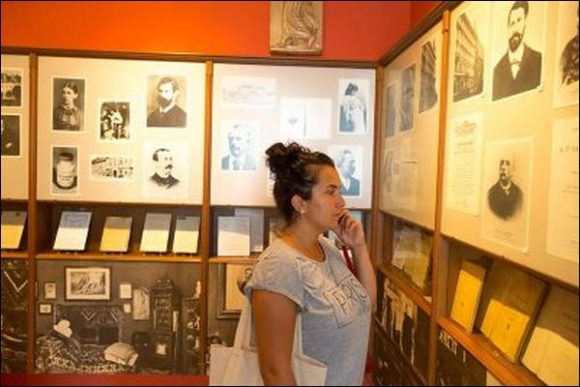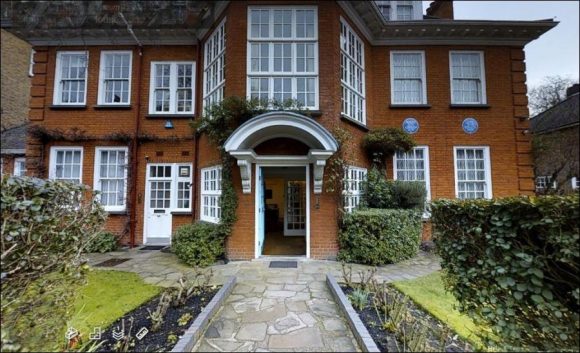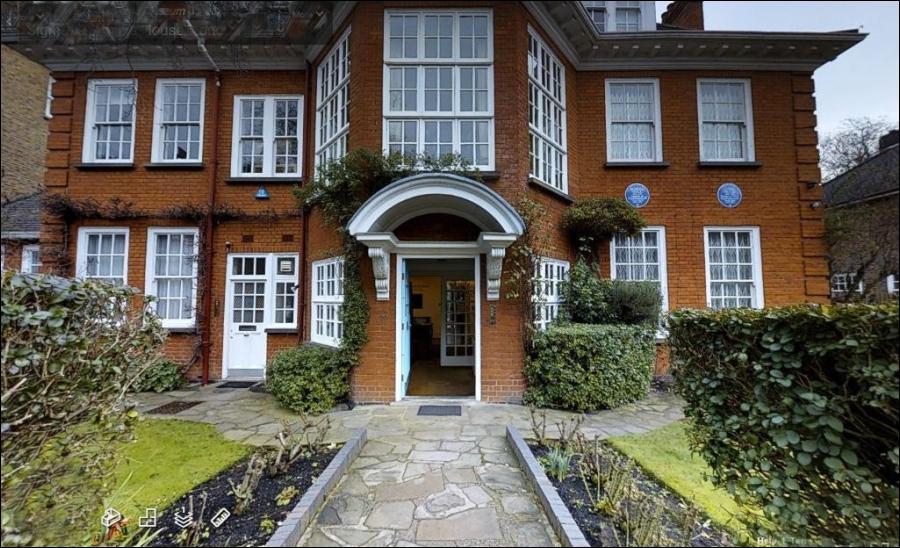The Freud Museum in London is a museum dedicated to Sigmund Freud, located in the house where Freud lived with his family during the last year of his life. In 1938, after escaping Nazi raids of Austria he came to London via Paris and stayed for a short while at 39 Elsworthy Road before moving to 20 Maresfield Gardens, where the museum is situated. Although he died a year later in the same house, his daughter Anna Freud continued to stay there until her death in 1982. It was her wish that after her death it be converted into a museum. It was opened to the public in July 1986.
Freud continued to work in London and it was here that he completed his 1939 book Moses and Monotheism. He also maintained his practice in this home and saw a number of his patients for analysis. The centrepiece of the museum is the couch brought from Berggasse 19, Vienna on which his patients were asked to say whatever came to their mind without consciously selecting information, named the free association technique by him.
The house had only finished being built in 1920 in the Queen Anne Style. A small sun room in a modern style was added at the rear by Ernst Ludwig Freud that same year. Freud was over eighty at this time, and he died the following year, but the house remained in his family until his youngest daughter Anna Freud, who was a pioneer of child therapy, died in 1982. The house has a well maintained garden which is still much as Freud would have known it. There are two other Freud Museums, one in Vienna, and another in Příbor, the Czech Republic, in the house where Sigmund Freud was born.
Let’s give brief information about the Freud Museum in Vienna. When entering the museum you are given an audio guide and you can learn everything with it. When you enter the museum, you feel a little more in a home environment than a museum. Not entirely, because for a while most of the items here had to move into London’s home, as we mentioned in Freud’s life. Freud, by virtue of his principles, did not leave any memorial documents about himself, but burned them all before his death. The information about Freud’s life in the museum has been revealed by the people around him and the people he corresponded with.
There are also various archaeological artifacts in the showcases, obviously Freud was inspired by ancient civilizations. So much so that we can also call the mind archaeologist for Freud, who is curious about the subconscious. The glory of Greece and Rome has succeeded in influencing Freud.

In the museum, the earthen vessels found by Freud in some way and small figures from the Egyptian period are on display. In this place, which Freud used as his office and office and also lived with his family, it is possible to see the documents and documents related to Freud’s books, the photographic footage of his relatives, and the old photographic locations of the places where Freud is located. Her work, Anna Freud’s work on child psychology, is also on display. We hoped to see Freud’s famous therapy sofa as well, but it was taken with him when he moved to London, and now the Sigmund Freud Museum, which is also the Anne Freud Museum, is on display in London.
In the middle of the room, where you can find photos and documents, you can also see a chest in which the items he took with him were left when he left Vienna, which he left after the Nazi invasion. There is a saying on the ballot box that he will go to London. In the 1970s, the chest was donated to the museum by her daughter Anna Freud, who had a child under the Sigmund Freud and Martha Freud couple.
Entrance fees and visiting hours
Entrance fee to the museum is $10 for adults, and if you have a Vienna Pass Card, you can enter for free. Freud Museum can be visited every day of the week from 10:00 to 18:00.
Where and how to get to Sigmund Freud Museum?
Freud Museum is located on Berggasse. Buses 40A and tram lines 1, D and E4 pass near the museum. You can also get off at Schottentor Satation using the U2 subway, but you have to walk 550 meters. You enter from the building of a large Freud sign on the street. When you enter the museum, you can see the timelines of the important moments in Freud’s life on the wall along the steps as you climb the stairs.
Views: 351







